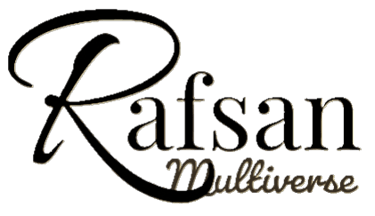Advancing Genome Editing: New Techniques for Large DNA Cargo Transfers
The future of gene editing is evolving! 🧬 Our latest article dives into the innovative techniques allowing for large DNA cargo transfers, including AI-driven solutions and novel enzyme-based methods. Learn about the challenges, breakthroughs, and ethical considerations shaping this field. #Genetics #Biotechnology #MedicalInnovation
BIOSCIENCE
Fazle Rabbi
3/31/20253 min read
My post content
Introduction
Gene-editing technologies have revolutionized medicine and agriculture, offering unprecedented possibilities for disease treatment and crop improvement. However, progress in medical applications has slowed due to the complexities of therapeutic development. While agriculture continues to advance steadily, scientists are exploring new ways to transfer large DNA fragments to enhance precision and efficiency. By leveraging AI-driven tools and novel enzyme-based techniques, researchers are pushing the boundaries of genetic modification.
Challenges in Gene Editing
Despite major breakthroughs, gene editing faces several hurdles:
Medical applications: The translation of gene-editing research into therapies has been slower than anticipated due to safety concerns and regulatory barriers.
Off-target effects: Traditional gene-editing methods can inadvertently modify unintended areas of the genome, leading to unpredictable consequences.
Regulatory and commercial challenges: Bringing gene-edited products to market requires navigating complex approval processes, which differ globally.
The Role of Large DNA Cargo Transfers
Gene editing often requires inserting large DNA sequences to introduce multiple genes or regulatory elements. These large-scale modifications are crucial for:
Developing new medical treatments that involve gene therapies targeting genetic disorders.
Improving agricultural crops by integrating multiple traits, such as drought resistance and pest resistance, into a single variety.
Mining for Recombinases: Qi Biodesign’s Approach
Qi Biodesign is pioneering techniques to insert large DNA fragments into plant genomes with high efficiency. Their method revolves around recombinase enzymes, which facilitate precise DNA integration. However, these enzymes recognize only specific DNA sequences, limiting their flexibility.
To overcome this challenge, Qi Biodesign employs AI-driven evolution to refine recombinase enzymes, increasing their effectiveness. Their innovations enable the insertion of 20–30 kb (5–6 genes) in a single step, streamlining genetic modifications for agriculture.
Reinventing Integrases: KOMO’s Site-Specific Genome Editing
Traditional genome engineering methods often rely on random DNA integration or double-strand breaks, which can lead to unintended mutations. KOMO Biosciences is addressing this issue by developing serine integrases, enzymes that precisely insert large DNA sequences at targeted locations.
Key Advantages of Serine Integrases:
High precision: site-specific integration without requiring sequence homology.
Reduced risk of mutations: no reliance on cellular repair mechanisms, minimizing unintended genetic changes.
Applications in therapy: enabling stable cell-line development and advancing in vivo gene therapy.
On-Off Switches for Genome Editing: Atelas Biosciences’ Innovation
Atelas Biosciences has introduced a cutting-edge genome-editing platform that combines nuclease and transposase activity to insert large DNA fragments efficiently. Their system includes an AI-designed on-off switch, ensuring precise targeting while preventing unintended insertions.
By integrating these control mechanisms, Atelas has developed a highly specific and efficient gene editing tool suitable for both medical and agricultural applications.
AI’s Role in Gene Editing
Artificial intelligence is transforming genome engineering by:
Predicting enzyme structures for more effective recombinase and integrase development.
Designing control mechanisms to regulate gene-editing activities and reduce errors.
Optimizing genetic modifications to achieve higher efficiency and precision.
Comparing Gene-Editing Platforms
Each gene-editing approach has its strengths and weaknesses:
Technique Key Features Best Applications CRISPR Precise editing, high efficiency Small edits, knockouts Recombinase-based editing Large DNA insertions, programmable Agricultural modifications Serine integrases Site-specific, high accuracy Stable gene therapy Transposase-based editing Large insertions with control mechanisms Versatile, programmable gene therapy
Regulatory and Ethical Considerations
Gene-edited crops vs. GMOs: Unlike traditional genetically modified organisms (GMOs), gene-edited crops often avoid introducing foreign DNA, making regulation more straightforward.
Medical applications: Ethical concerns about gene therapy include unintended genetic consequences and equitable access to treatments.
Global regulatory approval: Harmonizing regulations worldwide remains a major challenge for both agricultural and medical gene editing applications.
Future of Large DNA Cargo Gene Editing
The future of genome editing lies in refining these cutting-edge techniques to achieve:
Higher precision and efficiency to minimize risks and maximize effectiveness.
Broader applications beyond medicine and agriculture, including industrial biotechnology.
Global regulatory advancements to facilitate faster adoption and commercialization.
Gene-editing technology is at an exciting crossroads, with new breakthroughs on the horizon. By harnessing AI-driven tools, recombinase evolution, integrase precision, and transposase control, researchers are poised to unlock the full potential of large DNA cargo transfers. The coming years will likely witness transformative applications that reshape medicine, agriculture, and beyond.
References
Labant, M. (2025, March 1). "Making the Big Move: Techniques Evolve to Transfer Large DNA Cargos." GEN - Genetic Engineering and Biotechnology News
Qi Biodesign. (2025). Company Website
KOMO Biosciences. (2025). Company Website
Atelas Biosciences. (2025). Company Website
© 2024. All rights reserved by Rafsan Multiverse Ltd.
